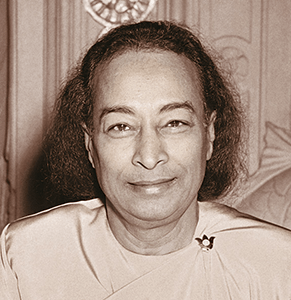Stella's Science Blog
In this science blog we review scientific articles on
neuroscience, neurotherapy, neurofeedback, yoga, and meditation

80-90% Effectiveness of Neurofeedback for
Anxiety and PSTD
SB # 0006
Over 30% of the US population suffer from an anxiety disorder over the course of their life time.
Over 30% of the US population suffer from an anxiety disorder (e.g., Generalized Anxiety, OCD, PTSD, phobia) throughout their life (Harvard Medical School, 2007). Tendency increasing. Anxiety spectrum disorders are characterized by excessive fear and anxiety, and associated dysfunction of neurophysiological stress processing and brain arousal circuits (Cisler & Olatunji, 2012). Due to former experiences in life as well as genetic predispositions several networks of the brain can get stuck in an overprotective pattern that leads to mild, medium, or severe symptoms. These networks include the limbic system engaged in emotional processing, the saliency network detecting potential threats in the environment, and the Default Mode Network, which in the case of anxiety disorders keeps the brain constantly on alert.
Neurofeedback targets these networks and enables the individual to learn to self-regulate brain activity and to retrain the brain to optimal functioning. Several studies from 1973 up to date support the efficiency of neurofeedback for anxiety spectrum disorders (Hammond, 2005; Russo, Balkin, & Lenz, 2022). For example, Garrett and Silver (1976) showed that neurofeedback significantly reduces anxiety when compared to a control group or relaxation training. For OCD cases, Hammond (2003) found that neurofeedback training reduced scores on the Yale-Brown Obsessive-Compulsive Scale (YBOCS) for clients for 3.35 SD, while a meta-analysis of 25 drug studies only produced an average treatment effect of 1.33 SD or less(Ackerman & Greenland, 2002).
In the meta-analyses of 2022, Russo et al report that 80-90% of participants can expect a large to moderate degree of alleviation in anxiety, PTSD, or OCD symptoms. None of the studies included in this meta-analysis reported harmful or adverse effects such as headache, fatigue, or irritability. Neurofeedback holds promise as a method for modifying biological brain patterns and is an effective and non-invasive technique that empowers clients to decrease their symptoms of anxiety-spectrum disorders (e.g., Generalized Anxiety Disorder or PTSD).
References
Ackerman, D. L., & Greenland, S. (2002). Multivariate meta-analysis of controlled drug studies for obsessive-compulsive disorder. Journal of Clinical Psychopharmacology, 22(3), 309-317. doi:10.1097/00004714-200206000-00012
Cisler, J. M., & Olatunji, B. O. (2012). Emotion Regulation and Anxiety Disorders. Current Psychiatry Reports, 14(3), 182-187. doi:10.1007/s11920-012-0262-2
Duffy, F. H. (2000). The state of EEG biofeedback therapy (EEG operant conditioning) in 2000: An editor’s opinion. Clinical Electroencephalography, 31(1), V-VIII. doi:10.1177/155005940003100104
Garrett, B. L., & Silver, M. P. (1976). The use of EMG and alpha biofeedback to relieve test anxiety in college students. In Wickramasekera (Ed.), Biofeedback, Behavior Therapy, and Hypnosis. Chicago: Nelson-Hall.
Hammond, D. C. (2003). QEEG-guided neurofeedback in the treatment of obsessive–compulsive disorder. Journal of Neurotherapy, 7(2), 25-52.
Hammond, D. C. (2005). Neurofeedback treatment of depression and anxiety. Journal of Adult Development, 12(2-3), 131-137. doi:10.1007/s10804-005-7029-5
Russo, G. M., Balkin, R. S., & Lenz, A. S. (2022). A meta-analysis of neurofeedback for treating anxiety-spectrum disorders. Journal of Counseling and Development, 100(3), 236-251. doi:10.1002/jcad.12424

How is it possible that people freeze in stressful situations, although they really want to take action?
SB # 0005
The polyvagal theory of Stephen Porges describes how different neuro-psychological states pre-determine our behavior.
In times when people experience stress or even traumatic events, the impulse is take action and do something to change the situation. But sometimes this just is not working. People feel paralyzed and are not able to do anything. For example, in times of the pandemic with potentially more time to finish projects or when being verbally or physically attacked by someone. This can raise feelings of guilt, incompetence, anger, hopelessness, or sadness. How can it be that people feel trapped in such a situation without being able to move and do something about it?
Rather than in personalities, the answer lies in our brain’s survival and processing mechanisms. Stephen Porges (e.g., 2001*) describes a seminal theory that went far beyond the well-known fight or flight response. He describes three different pathways in the regulation of our response to a stressful situation with very different outcomes. These processing pathways are structured hierarchically and when a person is at ease the most advanced pathway is supporting calm states consistent with the metabolic demands of growth, repair, and restoration. Found only in mammals, it promotes the feeling of being safe. It is in this state that we socially interact, connect, and engage with others. The next pathway activating the sympathetic nervous system reacts by mobilization (the well-known flight or fight reaction). However, the phylogenetically oldest pathway responds to threat by depressing metabolic activity and leads to a freeze reaction. Importantly, people cannot choose how the system will react in a certain situation, and if the situation is overwhelming, we freeze. This explains why people, who experience violence sometimes cannot fight back, or simply run.
Being aware of these three behavioral patterns can be helpful when observing one’s own and other’s actions and reactions. If the freeze, flight, or fight pattern is activated, this indicates overload of the system. To enable the body and mind to shift to the most advanced and restorative state, it is beneficial to acknowledge the situation without judgement, be gentle to oneself or the other in this situation and engage in actions that lower the psychological load. This helps to recover quicker from stressful situations and rebalance. Actions that foster the most advanced state and can be taken regarding one’s individual preferences are manifold: from creative activities (e.g., handcrafting, cooking, painting) to physical engagement (e.g., nature walks, Qigong, Hatha Yoga) to more contemplative ones (e.g., meditation, breathing exercises, chanting) – or simply to take a deep breath and pause.
Recommended further reading
- Porges, S. W., 2011. The Polyvagal Theory: Neurophysiological Foundations of Emotions, Attachment, Communication, and Self-regulation. New York, NY: W. W. Norton & Company.
- Van der Kolk, B., 2015. The Body Keeps the Score: Brain, Mind, and Body in the Healing of Trauma. New York, NY: Penguin Books.
References
Porges S. W. (2001). The polyvagal theory: phylogenetic substrates of a social nervous system. Int J Psychophysiol, 42, 123–46.

How can yoga practices be beneficial for so many different medical conditions?
SB # 0004
We present a neuro-psychological theory introducing a common theme to many, diverse medical conditions.
Yoga practices (postures, chanting, breathing exercises, and meditation) are beneficial for many diverse, frequently comorbid medical conditions – from depression, epilepsy, and post-traumatic stress disorder (PTSD) to chronic pain. But how can it be that “one thing” is beneficial for so many different problems?
Streeter, Gerbarg, Saper, Ciraulo, and Brown (2012) theorize that a reduction of psycho-physiological load in the stress response system through yoga practices leads to the restoration of optimal homeostasis (ability to maintain a relatively stable internal state that persists despite changes in the world outside). Due to repeated or chronic stress, the vehicle of the spirit (mind and body) is endangered to get out of balance. In a healthy stress response, the body gets out of balance only for a relatively short period. However, when the perceived stressful situation is repeatedly experienced over a certain period of time, the body cannot compensate for this accumulating wear and tear (allostatic load) and will respond with an imbalance of the autonomic nervous system (ANS), which has a wide range of effects. It is associated with the increase of symptoms in (or even discussed as the source of): depression, anxiety, PTSD, alcohol dependence, epilepsy, chronic pain, cardiovascular disorders, diabetes, obesity, immune infectious diseases, cancer, and asthma.
There are different pathways in the neural regulation of the ANS, which were described by Porges (2001) in his influential polyvagal theory. The developmentally oldest pathway is the unmyelinated visceral vagus nerve, which responds to threat by depressing metabolic activity (freeze reaction). The sympathetic nervous system (SNS) as the next developmental pathway reacts by mobilization (flight and fight). The most advanced, myelinated vagus pathway supports calm states consistent with the metabolic demands of growth, repair, and restoration. Found only in mammals, it promotes social engagement and proliferates feelings of safety. Myelinated vagal efferent fibers serve as the “vagal brake” that enables rapid control of heart rate (HR). This more rapid control of the HR allows for a greater HR variability (HRV) than the slower-acting SNS, which is a crucial indicator of the general health status and even is a predictor of morbidity. Thus, a high HRV implicates a greater flexibility of the stress response system to respond to challenges and implies an increased activity of the parasympathetic nervous system (PNS). This flexibility enables the body to more quickly return to a calm, resting, reparative, and anti-inflammatory state when the threat has ceased.
However, when stability is maintained through allostasis (when the body needs to compensate), the flexibility of the system is decreased. The greater dependence on the sympathetic excitation furthers hypertension, hyperarousal, and over reactivity, and makes the system prone to pathological states and damage to the organism. Medical conditions, such as depression, PTSD, epilepsy, and chronic pain go along with a PNS underactivity, a decreased HRV as well as with an increased cortisol level (an indication of a high stress level). Different studies on yoga practices (breathing exercises, hatha yoga, or meditation) showed that they can increase the HRV as well as lower the cortisol level, which both indicate the increase of PNS activity. Streeter and colleagues conclude that yoga practices lead to a reduction of the allostatic load and thereby to an increase in the activity of the third pathway with an increase of the PNS.
In sum, the severity, frequency, and length of the stressful events as well as the individual resiliency to stress determine the balance of the spirit’s vehicle. No matter what the source of the imbalance of the ANS might be, yoga practices are likely to decrease the symptoms of the given medical condition by supporting calm and restorative states.
Recommended further reading
- Porges, S. W., 2011. The Polyvagal Theory: Neurophysiological Foundations of Emotions, Attachment, Communication, and Self-regulation. New York, NY: W. W. Norton & Company.
- Van der Kolk, B., 2015. The Body Keeps the Score: Brain, Mind, and Body in the Healing of Trauma. New York, NY: Penguin Books.
Main references
- Porges S. W. (2001). The polyvagal theory: phylogenetic substrates of a social nervous system. Int J Psychophysiol, 42, 123–46.
- Streeter, C. C., Gerbarg, P. L., Saper, R. B., Ciraulo, D. A., & Brown, R. P. (2012). Effects of yoga on the autonomic nervous system, gamma-aminobutyric-acid, and allostasis in epilepsy, depression, and post-traumatic stress disorder. Medical Hypotheses, 78(5), 571-579.

The Benefits of Chanting OM
SB # 0003
Chanting OM is a well-known and widely used technique, but are the actual physical benefits?
Paramahansa Yogananda used to teach different OM techniques for meditation practice and among those to chant OM aloud. He mentioned that it is possible to achieve Samadhi by chanting OM alone. OM consists of three sounds A-U-M, however, is pronounced as one word OM. It represents the vibrational power of consciousness and expresses it’s creative, preserving, and liberating aspects. According to Patanjali’s Yoga Sutras, (1:27-29) “Meditation on Om results in cosmic consciousness and the removal of all mental and physical obstacles to success on the spiritual path”.
Repeating OM can be helpful to train focused attention and thus to keep the attention on the object of meditation. In this sense, it can help prevent mind-wandering – a mental obstacle. Repeating a mantra supports the ability to be in the present moment, which by itself increases the perceived happiness as a recent study in the journal Science showed.
Furthermore, through the vibrational nature of chanting OM aloud, researchers wondered whether it has an influence on physical obstacles as well. In a pilot study, they compared chanting OM with chanting “ssss”, and a resting state, while scanning the participant’s brain with fMRI. Astoundingly, only the OM vibration had a different and specific effect. It calmed the activity of the limbic system. The limbic system is responsible for emotional processing and is thus on high alert when a person is in fight or flight mode. In traumatized persons, it is often overactive as an overcompensation to the memory of the experience even though no danger is present.
Results of the pilot study indicate that chanting OM but not chanting “ssss” calmed the main parts of this network – amygdala, anterior cingulate gyrus, hippocampus, insula, orbitofrontal cortex, parahippocampal gyrus, and thalamus. Interestingly, these are the same brain areas that become deactivated through electrical vagus nerve stimulation for treatments of depression and epilepsy. The vagus nerve is the tenth cranial nerve and an integral part of the parasympathetic part of the autonomous nervous system supporting restorative processes (rest and digestion) of the body that are essential for well-being and health in general. Thus, the vibration produced by chanting OM specifically appears to activate the vagus nerve with its calming and relaxing nature which in turn deactivates the limbic system.
The manifestation of OM creates the visible world. So OM, being the manifestation of the eternal nature of the Infinite, is inseparable from and nothing but the Infinite himself; as the burning power is inseparable from and nothing but the fire itself.
– Sri Yukteswar, The Holy Science, Sutra 3
References
- Davis, R. E., 2011. An easy guide to meditation. CSA Press, Lakemont, Georgia.
- Kalyani B. G., et al., 2011. Neurohemodynamic correlates of ‘OM’ chanting: A pilot functional magnetic resonance imaging study. lnt J Yoga., 4(1): 3-6. doi: 10.4103/0973-6131.78171
- Killingsworth, M. A., & Gilbert, D. T., 2010. A Wandering Mind Is an Unhappy Mind. Science, 330 (6006), 932. doi: 10.1126/science.1192439
- Sri Yukteswar, S., 1990. The holy science. SRF: Los Angeles, California.
- Wuttke, A. M., 2019. The brain sutras: Keys to the revealed consciousness. Santa Barbara, California.

Does meditation make us happier?
SB # 0002
One if not THE major aim for beginning meditators is to train the ability to focus on one thing for a longer period of time. But does just being focused actually make us happier too?
Meditation is the uninterrupted flow of attention to an object of concentration. To achieve this aim, meditators use a variety of meditation techniques to train their concentration (focused attention). Considering that the concentration span of humans is often only a few seconds it is apparent how important it is to train focused attention. Indeed, humans spend roughly 50% of their awake lives with a wandering mind.
The ability to focus attention is not only helpful for a more beneficial and enjoyable meditation session, but transfers to our daily lives as well. Focused attention helps to stay on target and thereby to get work done in less time. But does just being focused make us happier too? Using a cell phone app, researchers asked over 2000 people at randomly chosen times what they were doing, whether they were focused on it or mind-wandering, and how happy they were. They found that people were happier when they were focused on their tasks and that this was true for pleasant as well as unpleasant tasks. Thus, just being present, being aware in the moment, is making us happier than when we are mind-wandering.
But what is mind-wandering? The brain operates with different networks. A network includes different brain areas, that are working together and are functionally related. The activation of the default mode network (DMN) with its core areas the ventromedial prefrontal cortex and the posterior cingulate cortex is often considered a correlate to mind-wandering. These brain areas are associated with self-referential processing and autobiographical memory. When people are in default mode, they are in a passive train of thought and are perusing their current activity in an auto-pilot mode. For example, a person may drive along the highway and see Exit 3, then again check the exit, and all of a sudden it is Exit 43. This person was mind-wandering and driving the car in an auto-pilot mode.
Since meditators are highly engaged in learning to focus and actually focusing the mind, researchers were wondering whether they are less in autopilot and instead more aware and more focused. This would show in a less active DMN. They compared experienced meditators with novices during various meditation techniques (concentration, loving-kindness, and choiceless awareness). Results showed that across all meditation types, the DMN (medial prefrontal and posterior cingulate cortices) was relatively deactivated in experienced meditators compared to novices. Thus, meditators were less in autopilot but more aware and in the present. Considering the connection between being focused and happiness, one may conclude that meditators are indeed happier.
Main references
Brewer, J.A., Worhunsky, P.D., Gray, J.R., Tang, Y.,Weber, J., Kober, H., 2011. Meditation experience is associated with differences in default mode network activity and connectivity. Proc. Natl. Acad. Sci. U. S. A. 108 (50), 20254–20259. doi: 10.1073/pnas.1112029108
Menon, V., & Uddin, L. Q., 2011. Saliency, switching, attention and control: a network model of insula function. Brain Struct Funct. 214(5-6): 655–667. doi:10.1007/s00429-010-0262-0

"The spine and the brain are the altar of the Infinite" Paramahansa Yogananda
SB # 0001
Every practice such as engaging in a specific sport, learning a language, or becoming a skilled piano player is shaping the brain through its inherent plasticity and ability to adapt. Yet, yogic practices shape the brain in a very specific way.
Almost 100 years ago Paramahansa Yogananda stated that the brain and the spine, the central nervous system, are the altar of God. Yogic and meditation practices serve to prepare the brain so that higher (clear and aware) states of consciousness can occur naturally. Advanced meditators often report that, rather than in a strenuous act, they effortlessly “drop” into these states, when they are calm and at ease. Neuroscientific studies reveal more and more what this preparation of the nervous system is and how it is established within the brain.
Every practice such as engaging in a specific sport, learning a language, or becoming a skilled piano player is shaping the brain through its inherent plasticity and ability to adapt. Yet, yogic practices shape the brain in a very specific way. Brain imaging studies over the past two decades show that meditation practice causes structural changes in the brain that modify the volume and neural density of certain brain areas as well as intra- and interhemispheric connectivity. These structural changes go along with alterations in brain function. Areas that show changes from meditation practice are associated with “self and emotion regulation”, meta-awareness (making awareness itself an object of attention), body awareness, and memory processes. These neural changes match the reported experience of being more emotionally balanced or more mindful and correlate with studies measuring increased memory performance in meditators. Thus, neuroscience reveals more and more how the altar of God is altered through a dedicated meditation practice and what the neurophysiological basis of higher states of consciousness is.
Main references
Tang, Y., Hölzel, B. K., & Posner, M. I. (2015). The neuroscience of mindfulness meditation. Nature Reviews, Neuroscience, 16, 213-225
